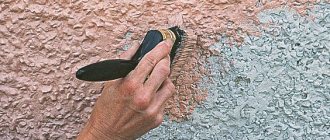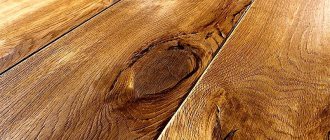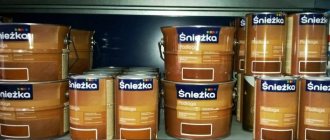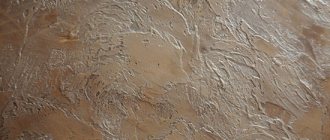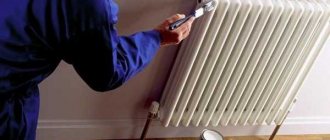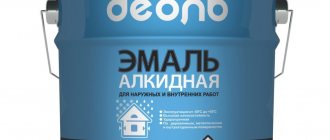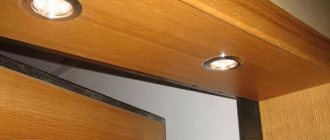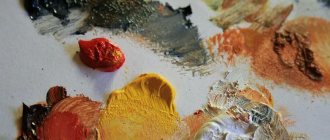Production and origin
Acrylic paints appeared on the market relatively recently. Scientists, in the process of splitting acrylic acid, were able to isolate a substance that became the basis for the manufacture of the polymer. It is a pure synthetic material. It has a transparent texture and excellent technical properties. The material does not have a pungent odor. It is very durable, tolerates thermal changes well, and is not afraid of ultraviolet radiation.
Using acrylic resins, manufacturers have learned to produce paints and paints. They prepare a solution, add a polymer dispersion, a binder, and a coloring pigment to it. The result is a material, after application of which a film is formed on the surface being treated that can protect against external factors. This paint adheres very well to the base and has a high degree of adhesion. Its quality depends on the type of acrylic resin and the fillers used. With their help, the viscosity of the paint and its matting are “formed”.
Polymer base for the production of acrylic paints
This indicator is adjusted by adding a solvent. When deciding how to dilute acrylic paint, you need to carefully study the manufacturer's instructions. The main parameters of the composition are indicated there, the scope of its use is indicated, and the main stages of preparing the paint for construction work are listed. The composition of acrylic paints provides their advantages:
- They are environmentally friendly and do not contain substances hazardous to human health.
- They are easy to work with, the compositions are applied in an even layer and dry quickly.
- The paints are odorless, so you can work with them even indoors.
- The materials are not prone to fire, they do not contain flammable substances.
- The ability to add pigments allows manufacturers to produce paints in a wide color palette. Today, using them you can not only paint various types of surfaces, but also create colorful paintings. What makes artists who paint walls and ceilings happy?
Acrylic paint colors
- The time for complete drying of one layer is three hours.
- After application, a film that is resistant to abrasion is formed on the surface. The color does not fade in the sun.
- The painted surface does not lose its attractiveness for ten years.
- The composition of the paint is unique; after application, its layer reliably protects the surface from moisture, while it allows air to pass through well.
- Painted areas are easy to clean, dirt particles do not stick to them, so the maintenance process is noticeably simplified.
Versatility and versatility provide a wide range of applications. Experts, talking about what acrylic paints can be used for, draw attention to the fact that they can paint metal and wood, concrete, a layer of decorative plaster and even fabric. With their help, tuning of passenger cars is carried out. They are used by manicurists and pedicurists to create amazing nail designs. There are restrictions on some types of plastic, but otherwise there are no prohibitions.
Nail extensions using acrylic powder
Finally, let's pay attention to the important function that acrylic powder performs - nail extension.
For extensions, powder is used in combination with a special colorless liquid, which is called monomer or liquid. When mixed, a plastic, viscous material is obtained, which is used to “sculpt” an extension of the nail plate using a brush.
The peculiarity of the resulting material is that it does not need to be dried in a lamp; it hardens upon contact with air. The master needs to work quite quickly - he only has a few minutes to apply the extensions, since after this the material will harden and the extended nail will have to be corrected with a file.
Acrylic powder is a material that allows you to extend the life of your manicure, create interesting designs, and increase length. And as you can see, there is nothing difficult in working with it. Don't be afraid to experiment and test different materials. They are created to simplify your work and improve your life!
Advantages of paints
All acrylic products based on water dispersion are safe for humans, they are environmentally friendly and do not pose a risk to nature or animals. Since only non-toxic substances are used for creation, paints can be used in children's rooms, hospitals, and gardens. Other advantages of coatings: No pungent odor. After applying the compositions, you do not need to ventilate the room, work slowly, this does not require the use of a respirator. Fire safety. The materials do not contain substances that are prone to rapid combustion. Moreover, there are special acrylic paints on sale with the addition of non-flammable components that stop burning. Fast drying.
After application, some paints dry literally before your eyes, so you won’t have to wait long before using the coating. However, when drying, you must strictly follow the manufacturer’s recommendations, because a large number of layers increases the drying time. Variety of shades. There are many colors of tinting pastes and dry pigments on sale; it is easy to choose a material for any interior. Using acrylic paints you can create various designs, decorative elements and patterns. Elasticity and hiding power.
The paint spreads perfectly over the surface, covers it with a dense layer, and does not crack or crumble after drying. Strength and durability. Acrylic compounds do not wear out because a strong protective film is formed on their surface. Many of them can be washed and cleaned, making them easier to maintain. The highest quality coatings last up to 10–12 years. Optimal microclimate. The film of the material remains vapor-permeable and therefore does not disturb the microclimate of the room. Dust and dirt do not accumulate on the paint, since its pores are minimal in size. Versatility. The paints are suitable for completely different situations, for external and internal work, they can be combined with other coatings. In addition, acrylic is excellent for most well-known construction and finishing materials. Frost resistance. Acrylic easily tolerates low temperatures, so it is suitable for use outdoors or in unheated rooms. The paint will not crack due to frost for many years.
Manufacturers
Today, there are several of the most popular and well-known companies that produce high-quality and durable acrylic paints. Below is an overview of the most popular brands.
Dekart
This large manufacturer specializes in the production of various paint and varnish coatings, which are intended both for finishing walls and ceilings indoors, and for facades and fences outside. All Dekart products are of unsurpassed quality, as they are made from safe raw materials.
Prices for this manufacturer's products range from very affordable to high. Dekart interior acrylic paints are presented in a large assortment. Each consumer will be able to find the composition of the desired shade for themselves.
"Tex"
"Tex" is one of the largest manufacturers specializing in the production of high-quality paint and varnish products in St. Petersburg and Russia in general.
This large company's product range includes excellent acrylic paints that receive positive reviews on the Internet. Consumers, first of all, note the excellent adhesion of these mixtures to any substrate, as well as their durability and resistance to mechanical damage.
However, there are also rare responses from customers who claim that the Tex brand acrylic paint they purchased is not actually washable and suffers from constant contact with water. It is difficult to say what the cause of this problem is. Perhaps some buyers purchase a low-quality surrogate finishing material or apply it incorrectly on their own.
"Areal +"
This company has been engaged in the production and wholesale distribution of good quality paints and varnishes since 2008. A relatively young brand has already managed to win the respect of consumers, since its products last a long time and do not cause any problems during their presence on the walls or ceiling.
Acrylic interior paints "Areal +" are relatively inexpensive and are sold in large plastic buckets. They do not smell and look aesthetically pleasing. Many specimens can be used for both wall decoration and ceiling decoration. This manufacturer also has a huge range of high-quality façade paints in different colors.
Joker
This trademark belongs to the Tikkurilla concern, located in St. Petersburg. Products manufactured under the Joker brand are very popular among modern buyers due to their affordable prices and large selection of colors.
A distinctive feature of this product is its hypoallergenic base. That is why such paints can be safely used by experienced allergy sufferers and people suffering from asthma. As for the direct composition of the acrylic compositions of this brand, it was developed jointly with the Association of Allergic and Asthmatic Diseases of Finland.
Caparol
This famous German manufacturer has been producing high-quality and durable paint since 1885. During its existence, the Caparol brand has managed to gain worldwide popularity and the love of consumers, since its products are of unsurpassed quality.
All brand products are environmentally friendly and absolutely safe for health and the environment.
Belinka
This manufacturer from Slovenia produces durable and wear-resistant paints. Its range includes interior mixtures for finishing walls and ceilings.
All Belinka brand products are designed for surfaces subject to maximum wear. The paints of this manufacturer are resistant to abrasion, mechanical damage and many other external factors. In addition, high-quality Belinka acrylic paints are not afraid of aggressive chemicals.
Oikos
Oikos is a well-known Italian manufacturer that produces high-quality paint and varnish coatings that are environmentally friendly and have good performance characteristics. Acrylic paints are high-tech and very easy to work with.
Oikos products are wildly popular not only in Italy, but throughout the world. This is explained not only by the highest quality of goods, but also by their rich assortment. The company offers beautiful and flexible paints in a variety of colors (more than 2000). In addition, consumers have an excellent opportunity to obtain the unique effect of finishing materials such as silk, mother-of-pearl marble or velvet.
"Sigma-Color"
This manufacturer offers customers a choice of decorative and protective paint coatings. The Sigma-Color assortment includes high-quality acrylic paints for finishing facades. Branded mixtures are not afraid of harsh climatic conditions and are water resistant.
If you want to purchase beautiful interior paint with an acrylic base, then this manufacturer can offer excellent washable compositions in various shades. According to representatives of Sigma-Color, their products are durable, economical in consumption, high vapor permeability and quick drying. In addition, such acrylic paints have affordable prices.
Application technology
In order to obtain a high-quality result, the surface to be painted must first be cleaned of dirt and dust, and then primed. To do this, it is better to use a special composition or white acrylic paint diluted in half with water. If you ignore this process, the consumption of the finishing coat will double (both acrylic paint on wood and any other type are well absorbed into the base). If it is pre-coated with primer, much fewer layers will need to be applied.
If there is an old layer of paint, it is better not to experiment, but to remove it completely with a spatula. If this work is not done carefully, the result will not please you: the acrylic compositions are applied in a very even thin layer, and the presence of any defect is only emphasized and exposed.
Preparing walls for painting
The direction in which the first layer of paint is applied does not matter. If the material is used to decorate walls or ceilings, it is better to apply the finishing layer towards the window. Then the finish will look perfect.
Before applying acrylic, glass and metal surfaces must be wiped with an alcohol composition, which allows the surface to be degreased. Then the paint layer will lie flat, and after drying the coating will be very strong and durable.
To choose the right color, you need to try on a separate piece of the material being processed. The fact is that acrylic paint for wood, metal, glass becomes a little darker after drying. It is important to pay attention to the structure of the composition. It can be glossy, matte, translucent and completely transparent. After hardening, it will be impossible to correct defects.
Acrylic paint darkens slightly after drying.
When compositions of different colors are used for work, when using them to create a large-scale painting on the wall, it is advisable to take a little paint of each color and pour it into separate small containers (in plastic cups, for example). If you need to go out for lunch, all you need to do is wrap the top of the cup with plastic and secure it to the container with tape. In this form, the composition will not be able to dry quickly. It is useful to close the paints remaining in their containers tightly and prevent air from entering.
When leaving, don’t forget to leave your brushes and rollers in the water. After work, they must be washed with laundry soap.
Note! Acrylic paint is difficult to wash off from hands and clothes, so it is advisable to protect yourself from getting it. To do this, you need to put on an old robe, which you don’t mind throwing away later, and rubber gloves. So that later you can somehow wash away the multi-colored marks, it is useful to prepare and place nearby a solvent for acrylic paints, a rough washcloth or pumice stone for cleaning the soles of your feet. When painting walls, experts advise carefully covering the floors with thick oilcloth.
Manual tinting
If among the dozens of shades presented in the store catalog there is not a single sample that fully meets the requirements, you should not give up your plans and compromise, because color in the interior is of great importance! You just have to be patient and tint the acrylic paint yourself. You will also need this method if there is no store nearby that installs computer tinting.
What will you need?
No complicated devices are needed. Decide on a color and prepare everything you need.
- White base paint. It is taken in an amount sufficient to cover the entire surface to be finished. It is not difficult to calculate costs, because the manufacturer always indicates the material consumption per 1 square meter. meter. It is recommended to add one tenth to the resulting figure to avoid accidental shortages of composition. Also keep in mind that acrylic paint is usually applied to the surface in two layers to ensure that the coating is rich and even in tone.
- Colors (one or several, depending on the complexity of the desired shade).
- Mixing container. The material is tinted in one large container (bucket or basin) so that the end result is a composition that is completely uniform in tone for painting the entire surface.
- Construction mixer or drill with a special attachment.
- Small container for preparing a sample.
- A pipette or syringe, which is convenient for adding color, while counting the drops (if the bottle with color does not have a narrow spout).
Important: the colorant must match the composition of the base solution or be universal. It is impossible to tint acrylic paint based on an organic solvent with a water-soluble pigment (and, conversely, water-based - organic).
Creating a Probe
In order not to make a mistake with the color and not spoil all the purchased material, it is better to tint a minimum amount of it, while calculating the proportions. This is done like this:
- pour 100 ml of white paint into a small container;
- take liquid pigment into a pipette and drop it, counting each drop, into the future sampler (start with a small portion of the color);
- write down the numbers on paper;
- mix thoroughly;
- add color until you get the desired shade, and each time record the number of drops on paper to make the final calculation.
It is advisable to prepare the sample in the very room that is to be finished, and under the lighting usual for this room. The fact is that natural daylight and a chandelier or sconce “play out” the same shade differently.
Make sure that the lighting and the shade you create do not “argue” with each other. To do this, apply paint to a piece of plywood or thick cardboard, let it dry and take a closer look from a distance of several meters and from different angles. Everything is fine? Then it's time to take the next step.
Getting the right shade
When the sample is ready, you can start mixing the main volume of paint.
The calculations will be as follows: for one liter of white composition you need to take 4/5 of the amount spent on the color sample, multiplying them by 10.
For example: to 100 ml of paint you added 10 drops of one dye and 5 drops of another. This means that per liter of white base you will take 80 and 40 drops, respectively. The quantity can be reduced a little more if you are in doubt, because it will not be difficult to add brightness if necessary, but it will not be possible to whiten the tone.
Now the composition needs to be mixed very thoroughly. Use a construction mixer or a drill attachment to make things go faster. Turn on the electrical appliance at low speed (it is not advisable to whip up the paint).
You can do the tinting yourself by calculating the proportion first on a small part, and then mixing the entire volume.
It is quite difficult to mix thoroughly by hand; small errors may remain, which will appear on the surface in the form of streaks, spots and stripes.
It is recommended to paint one more test sample to finally make sure that the resulting shade matches your ideas. If necessary, you can make final adjustments.
How to prepare the composition for painting
Any enamels must be diluted before application. Not everyone knows how to dilute acrylic paint. The manufacturer does not always indicate this item in the technical data sheet. If there is no additional information, you can dilute the paint with plain water. When the 1x1 ratio is selected, the ideal composition for priming the base is obtained.
If you need to apply a very thin layer that will lie evenly on the surface, experts advise adding two parts of water (200 ml per liter). The more water, the thinner the paint layer will be.
Note! The paint must be diluted in a separate container. You cannot pour water into the jar straight away. In such a situation, it will be difficult to control the consistency of the finished composition. Acrylic diluted with water cannot be stored. Once dry, it becomes unusable.
Water is the best base for acrylic paints.
Hot boiled water is the best thinner for acrylic paints that are dried and unused. To “reanimate” them, you need to grind the dried paint into powder, and then pour boiling water into it. Leave for a few minutes, drain, and repeat the procedure again. After the paint has softened well, excess water is poured out, everything that remains in the container is thoroughly stirred. Of course, after such “reanimation” the material partially loses its properties, so experts do not recommend using it for painting “ceremonial” places. However, if you need to improve the appearance of an old shed, paint will do just fine.
Selection of acrylic paints
To purchase, you should visit a construction supermarket or another store that sells trustworthy brands of paint and varnish products. This will eliminate the purchase of a low-quality fake, which may not contain acrylic at all. If paint is purchased for walls or ceilings in a damp room, you should pay attention to its resistance to moisture and the presence of antiseptic additives in the composition. Each can of paint always indicates the permissible number of brushing treatments (indicated by numbers). The manufacturer guarantees no damage until this indicator is reached (usually it is no more than 30). The shelf life of the saturated color, which does not differ from the original in intensity, is also indicated on the label - in years or months.
Indoor ceilings are most often painted white. When purchasing such paint, you need to be more careful: often the mark “white” does not correspond to reality, and in reality the material is milky or yellowish. The ideal shade can only be achieved by applying super white paint. When purchasing, it is also important to evaluate the level of paint viscosity. Mixtures that are too viscous are difficult to work with, especially with a spray gun. They will have to be diluted, which is quite labor-intensive when processing large areas. Watery paint is also not the best solution; it does not have sufficient adhesion and hiding power, so the quality of wall painting will remain at a low level. According to professionals, the most convenient and high-quality products are those with the addition of thixotropic substances. Thanks to them, the paint does not flow down the wall or drip from the tools, but its consistency becomes optimal when mixed. After drying, such compositions form a perfectly smooth polymer film on surfaces.
How to paint with acrylic paints correctly
Today on the Internet you can find a lot of different information about how to paint with acrylic paints. Of course, each artist's approach to work may differ from each other. And every way of drawing will be correct!
Nevertheless, I decided to make my tiny contribution to the “web of the Internet”, since I work with this type of paint, along with traditionally oil and varnish stained glass paints. You can view my paintings in different techniques in ⇒ Gallery ⇒
The whole complexity of painting with acrylic paints lies in the details. The general principles of applying these paints and their combinations differ little from oil. But nevertheless, mixing, applying them to the surface, as well as transparent glazing are somewhat specific. Previously, I wrote about the possibilities of acrylic techniques in painting.
For those who are just looking at acrylic and trying to paint for the first time, it is useful to take the first steps using a proven method. That's why this article appeared: I will tell you how to paint with acrylic paints in such a way as to take into account their main features. This, of course, is not an absolute rule, since any painting is a whole living world and, accordingly, improvisation in art is only welcome.
Two sketches with acrylic paints
In the photo I select one of the acrylic sketches for further work on canvas with oil. There would most likely be no jazz in the art of music if it were not for the virtuosic musical improvisation of musicians. By the way, did you know that many musicians have shown talent in the visual arts? Take an interest and see for yourself the talent of artist-musicians
In the future, if you decide to continue working with them, you will be able to experiment with certain subtleties, improvising and creating your own music on canvas! So, let's go...
Getting started: preparing the palette, brushes and paints
You can paint with acrylic paints on cardboard, on thick paper intended for acrylic, but it is better, of course, to use a suitable canvas for acrylic painting. Therefore, painting with acrylic paints on canvas will be the right decision!
If you are not ready to paint on canvas now, then start simple, with acrylic paper, with a canvas structure. You can later glue such work onto thick cardboard, hardboard or canvas. And as they say, frame it and hang it on the wall!
Supplies before starting acrylic painting
Already at the stage of preparation for work, you need to take into account the main features of acrylic paints.
The first feature: they dry very quickly, both on the palette and on the canvas. Therefore, to prepare paints, you need to either use a special palette or constantly maintain them in a semi-liquid state. If you decide to apply the masks impasto or with a palette knife, then this feature will only help you.
How long does acrylic paint take to dry?
Everything directly depends on the thickness of the stroke; the thinner it is, the faster the acrylic dries! If the drying speed in acrylic painting confuses you, and you are hesitant to try them in your work because of this, then don’t worry. , special drying retardants have appeared in the Art space
Retarders for acrylic painting
They dilute acrylic paint and it will not dry on the palette for hours, remaining in the desired consistency. It also dries noticeably slower on canvas.
The second feature: after drying, acrylic paints darken slightly, dulling by about a tone or two. Therefore, initially we select them so that in their working form they are a tone or two lighter than we need in the picture. This is especially important if you are adding where a stroke has already been placed. That is, one stroke on top of dry paint will be visible... try it and you will understand for yourself.
Sketch with acrylic paints
The photo above shows an example of a previously made sketch with acrylic paints. This sketch was prepared before the main work - painting on the wall. The drawing must be clear and correctly written. Therefore, the image on the wall must correspond to the sketch, since there will be an exact repetition, only on a larger scale.
Notice the transition from light to dark in the arch opening.... This effect can be achieved by glazing, as if transparently covering it with one paint on top.
A picturesque layer of paint is the main thing in painting, so we begin work by choosing the colors and shades of your future composition. As a rule, beginning artists simply take the colors of paints that are in their kit, that is, in tubes. What if you need colors that are not in the tube? This is where the ability to mix colors comes to the rescue to get a new shade. After all, it is through mixing that we get new interesting color variations!
A wealth of shades is obtained by mixing
Earlier in articles I wrote about color science, as well as the ability to mix colors in simple words using the example of oil painting. But as I wrote above, the principle of mixing is the same, so it’s quite suitable for acrylic painting.
You can almost always mix paints both on canvas and on a palette. Here everyone chooses the option that is more convenient for them, but in general, mixing on the palette is more reliable - you know exactly what color will end up on the canvas.
Next, we prepare the palette. Here you can go in different ways:
- Use a regular palette on which oil paints are prepared. The paints on it will need to be frequently sprayed with water, or the paints themselves will need to be laid out in small portions. To avoid having to clean your palette after each painting session, wrap it in clear cling film. After working with acrylic paints, simply peel it off and throw it away.
- Take a little trouble and make a special palette. Those who constantly work with acrylic paints have their own tricks in creating a palette. The bottom line is that it should be constantly damp, but not wet, so that water does not stand in it. Most often, several paper towels are used for this, tracing paper is placed on the surface, and all of them are carefully placed in a saucer and moistened with water. The towels retain moisture for a long time, and the tracing paper prevents drips from forming. It is important here to choose a good tracing paper that, after getting wet a few times, will not begin to become covered with lint, which will then end up in the paint and on the canvas. According to some artists, the best tracing paper for these purposes is found in boxes of chocolates.
- Use disposable plates as a palette ; it’s very convenient and there’s no need to wash it. I use this option most often.
The second and third options are good because the remaining paints on such a palette can be covered with cling film and placed in the refrigerator. In a cold place they will not harden for 1-2 days and can be used again.
Important: after you squeeze out the required amount of paint onto the palette, tightly close and screw the tube or jar of acrylic, otherwise the paint will dry completely at the base and it will not be possible to squeeze it out of the tube!
Acrylic dried paints
And the last thing in preparation is to take suitable brushes. As a rule, synthetic brushes of medium and high hardness, as well as natural bristles, are used to work with acrylic. Since the paints are quite heavy and soft, natural brushes will not allow sufficient control over their application to the surface of the canvas.
Each brush can make different strokes and perform different functions in painting. You can get some advice on the right choice of brushes in a separate article.


